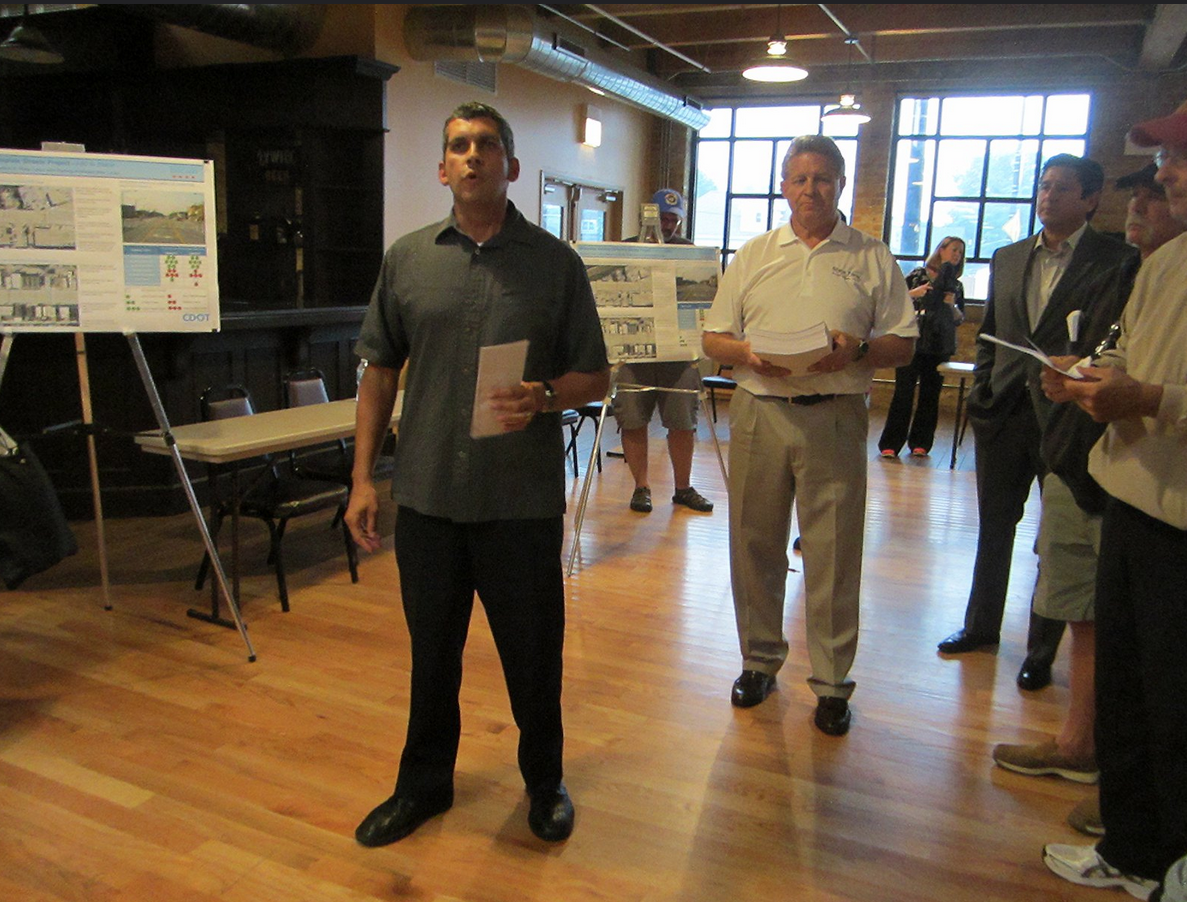There are many Chicago retail streets that are important biking corridors, where there would be room to build physically protected or separated bikeways – if we remove car parking from one side of the street to make room for it.
That's been a hot topic among local bike advocates recently, since the Chicago Department of Transportation is in the process of installing dashed bike lanes, which are just about the least-robust type of bikeway, on business strips like Armitage and Montrose avenues.
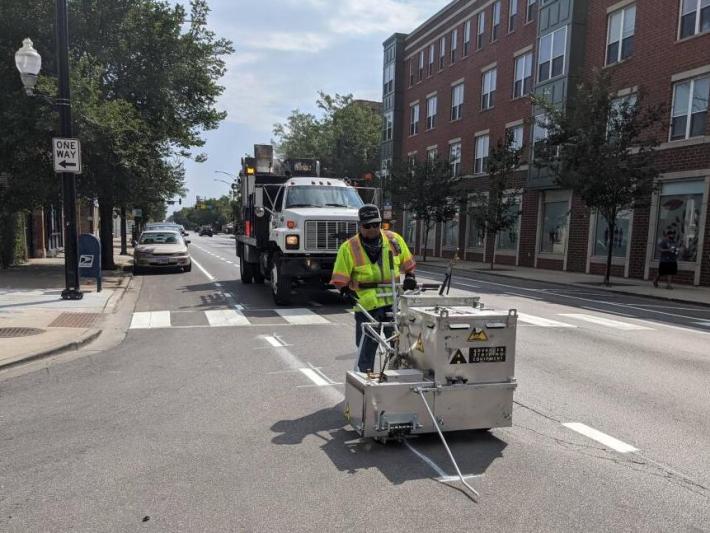
As I discussed yesterday, many have asked why CDOT is putting in markings that at best represent a minor improvement over the status quo, whereas if they go for the gold and strip parking there would be space for bike lanes that would physically protect people biking from being struck by people driving. I noted that the department has actually done this, or is planning to do so, in a few locations (in some cases not all parking was or is being removed from one side of the street):
One of the barriers to doing this is Chicago's horrible 75-year parking contract, which requires the city to replace any metered spaces that are removed, or else compensate the parking concessionaire for lost revenue. This is a major headache, but it's not a total dealbreaker. In some cases, like Milwaukee in River West, spaces on the main street were replaced with new diagonal spots on side streets. Metered spots can also be relocated to other parts of the neighborhood.
Another hurdle is opposition from residents and merchants who fear that removing parking spaces will create a parking crunch and hurt sales. During a twitter discussion of the parking removal question, Streetsblog Chicago cofounder Steven Vance asked me:
When’s the last time that the city tried to remove parking, there was push back from merchants, and the city stopped trying?
— Steven (@stevevance) August 24, 2021
Here are some examples of that phenomenon that came to mind. Like most of the above examples of successful parking removals, these are all on Milwaukee, Chicago's busiest biking street.
Milwaukee on the Far Northwest Side
In 2014, after CDOT proposed doing a four-to-three conversion road diet with parking-protected lanes on Milwaukee between Lawrence and Elston avenues on the Far Northwest Side, there was a major backlash, partly due to the fact that a few parking spaces would need to be removed to create safe sight lines. Then-local alderman John Arena (45th) supported the idea.

But aldermanic challenger John Garrido used the project as a campaign issue, collecting hundreds of signatures against the plan with help from the Gladstone Park Chamber of Commerce. Arena won reelection, but ultimately the proposal was watered down buffered bike lanes with no travel lane conversions. Last month Thomas Travers, 59, was fatally struck while biking on that stretch of Milwaukee.
Milwaukee in Wicker Park
In 2017, after an epidemic on dooring crashings on Milwaukee in Wicker Park, the Wicker Park Bucktown Chamber of Commerce Master Plan floated the idea of adding bike lanes. The Active Transportation Alliance helped organize support for the lanes, launching a petition calling for "new bikeways that eliminate risk of doorings and other common crashes," i.e. physically protected bike lanes, and hosted a member meetup to discuss the proposal.

But installing protected lanes would have required stripping parking from one side of the street. Local alderman Scott Waguespack (32nd) asked the Wicker Park Committee neighborhood group to take an advisory vote on the proposal, and most members were opposed. "It would kill the merchants," Pint bar owner Kevin O'Donnell told DNAinfo at the time. "For the sake of bikes you're disturbing vehicle... traffic."
Waguespack told DNAinfo, "If you drastically reduce the number of on-street parking there will be pressure to have off-street parking," which he said would reduce available land for development. Ultimately CDOT wound up striping dashed bike lanes on the corridor.
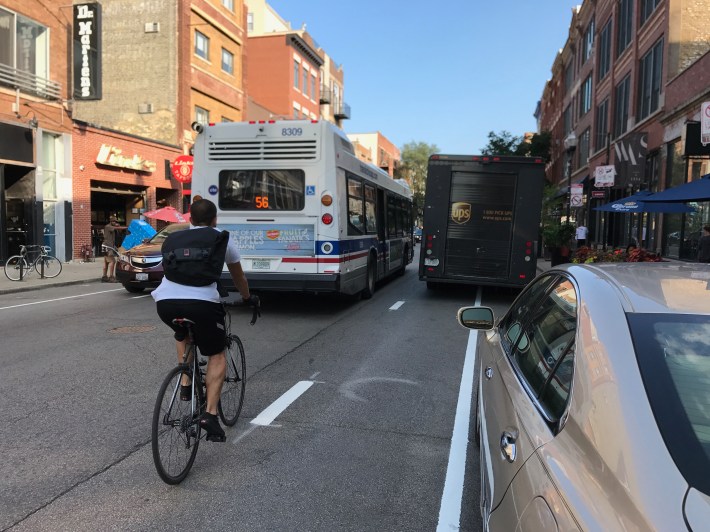
Milwaukee between Belmont Avenue and Logan Boulevard
Milwaukee is being rebuilt between Belmont Avenue and Logan Boulevard, likely starting in October. Removing parking to make room for protected bike lanes was originally a possibility for this half-mile corridor where, according to a 2017 study, four to seven percent of trips were made by bike.

However, the final plan announced doesn’t even include full non-buffered bike lanes, but only – you guessed it – dashed lanes. Presumably there was some negative feedback to the idea of parking removals from residents and/or merchants at community meetings and CDOT and/or local alderman Carlos Ramirez-Rosa (35th) decided against it.
Counterexample: Milwaukee between Western and California
While in the above three examples CDOT and or/the local alderman didn't follow through with installing protected bike lanes, Milwaukee between Western and California in Logan Square is an encouraging example of city officials showing some backbone. About 100 parking spaces, mostly on the west side of Milwaukee, were relocated to other parts of the ward as part of the project. Helping them was the fact that parking demand was relatively low here. CDOT counts showed that on average a mere 46 percents of the spots on this stretch of Milwaukee were occupied on weekdays.
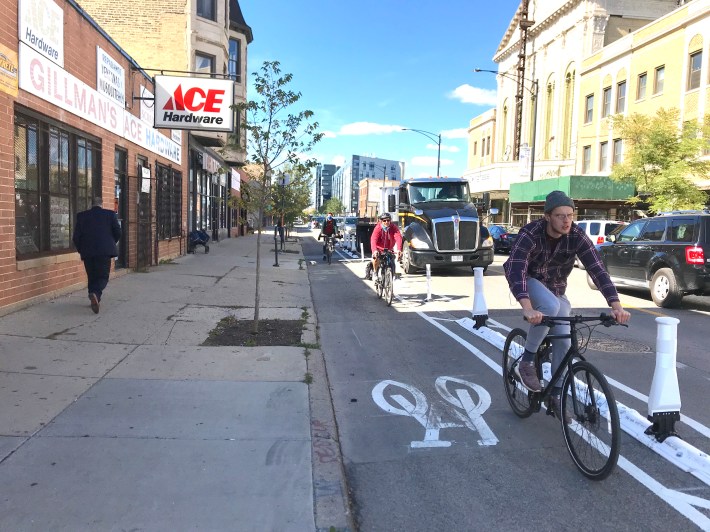
Even so, when the protected lanes debuted last October, the owners of Gillman's Ace Hardware and the Cozy Corner diner argued the removals would ruin their businesses. The bikeways “have taken my employees’ livelihood and my livelihood away,” Alan Gillman told Block Club Chicago. “This has been in effect for maybe 10 days and a third of my business is down already.” But the bike lanes remained in place, and the issue seems to have blown over.
A new hope for Milwaukee in Wicker Park
Parking occupancy appears to be much higher on Milwaukee in Wicker Park, but there's a new proposal for protected bike lanes on this stretch up for election in the 1st Ward participatory budgeting election. "Redistribute parking from one side of street to other locations," wrote backer "Katie McM," adding "This would give space for more robust bike infrastructure such as physically protected bike lanes... Milwaukee Ave is one of the busiest bikeways in Chicago. It is also terrifying to bike on."
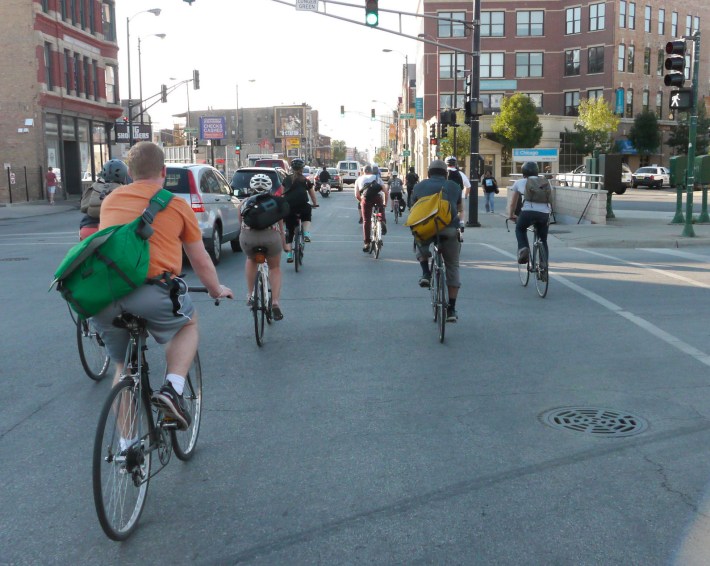
There's reason to believe that, if there's enough community support for the idea this time around, Alderman LaSpata will give it more serious consideration than Waguespack did. Streetsblog will have more details on the proposal in the near future.
